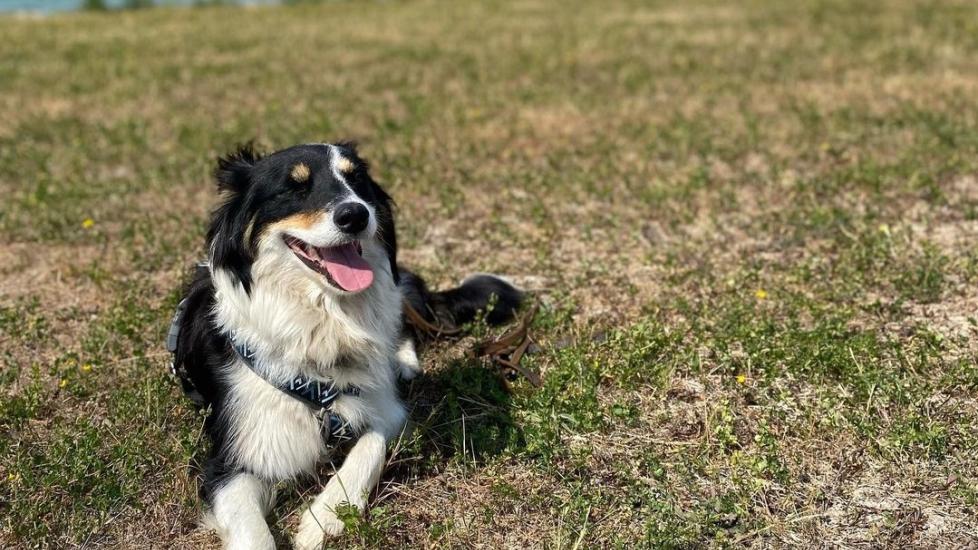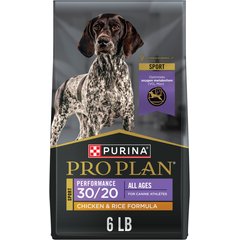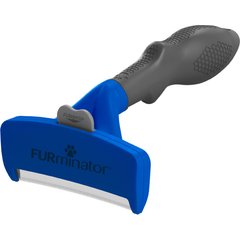Border Aussie
Border Aussies are the offspring of two popular herding dogs: the Border Collie and the Australian Shepherd. As a relatively new crossbreed, the Border Aussie is variable in both appearance and temperament and has no set standard. But looking at the two parent breeds gives a good idea of what you can expect with this mix.
Both Border Collies and Australian Shepherds are energetic and highly intelligent dogs. When these two breeds combine to produce a Border Collie-Australian Shepherd mix, you can expect a medium-sized dog (30–65 pounds) with maximum amounts of smarts, biddability, and energy. Border Aussies have strong working-dog instincts, and will need to find healthy outlets for their skills and stamina.
Caring for a Border Aussie
Understanding the Border Aussie’s herding genetics is core to providing the best care. As the offspring of two dogs that could be described as workaholics, Border Aussies need a job that can supply them with intense physical and mental exercise. Being a family pet can count as a job, but you’ll need to provide one to two hours of daily activity.
Border Aussies are good-natured dogs that can get along well with people of all ages—and other pets—as long as they are adequately socialized and trained. Without proper direction and outlets for their brain and body, their instincts may prompt them to start herding other animals or children. They can also be reserved around strangers and prone to excessive barking.
Like most working breeds, Border Aussies are unfussy when it comes to grooming. Their thick, weather-resistant coat needs to be brushed only once or twice a week, although you may want to up your grooming game during shedding season to keep the extra fur in check.
Border Aussie Health Issues
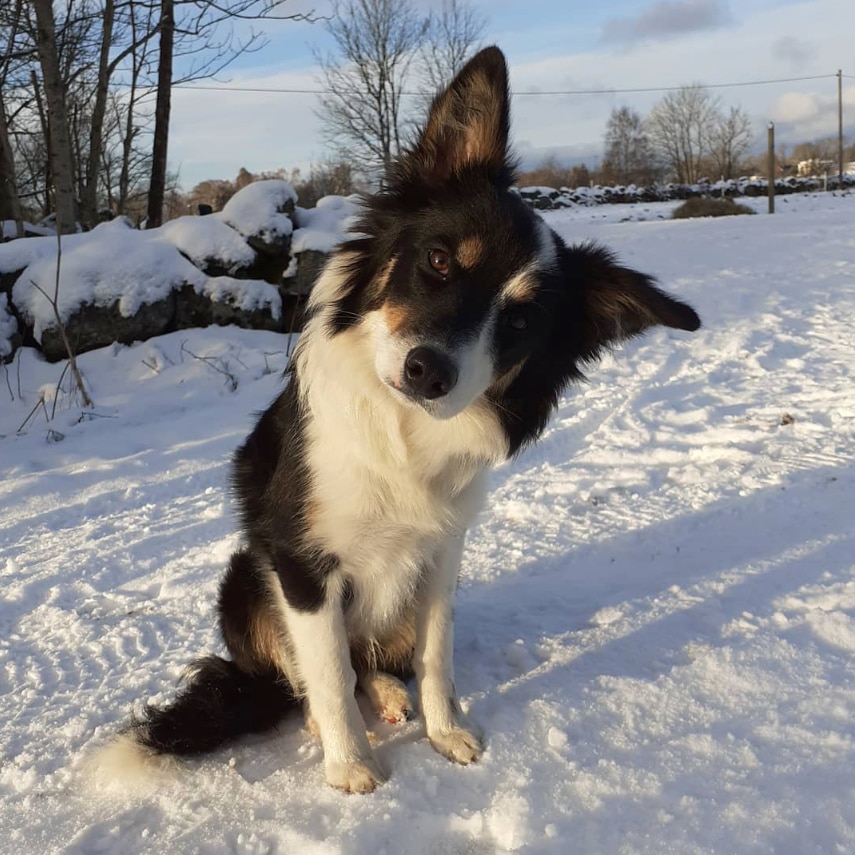
Both Border Collies and Australian Shepherds are healthy breeds with life expectancies of 12–15 years, so you can expect the Border Aussie’s lifespan to fall within this range. Still, like all dogs, the two breeds are prone to various health conditions that can be passed to their Border Aussie puppies.
Hip Dysplasia
Hip dysplasia is a condition in which the hip joint doesn’t develop properly, becomes loose, and leads to degenerative joint disease (osteoarthritis). Mild cases are treated with interventions like physical therapy and anti-inflammatory medications, but severe cases may need surgery.
Common signs of hip dysplasia include:
-
Limping
-
Reluctance to get up or jump
-
Shifting of weight to front legs
-
Loss of muscle mass in back legs
-
Hip pain
Progressive Retinal Atrophy
Progressive retinal atrophy (PRA) refers to a family of eye disorders in which the rods and cones of the retina deteriorate. Signs of disease include:
-
A reluctance to enter dark spaces
-
Clumsiness
-
Dilated pupils that constrict slowly in response to light
-
Eyes that are more reflective in the dark
-
Cataracts
There’s no cure for PRA, and the condition eventually leads to blindness. But blind dogs can still live long and happy lives with the help of dedicated pet parents.
Deafness
Dogs with merle and white coats are more likely to carry genes that lead to a malformation of the cochlea of the ear, resulting in deafness. One or both ears may be affected. Though the condition is permanent, with some adjustments and training, dogs with hearing loss can live long, happy lives.
Epilepsy
Epilepsy is a brain condition characterized by recurring seizures without a known cause. Epileptic seizures tend to last a minute or two, and signs can include loss of consciousness, uncontrollable spastic muscle movements, urination, and defecation. Lifelong medication is used to manage the condition.
Multidrug Resistant Mutation
Dogs affected by Multidrug Resistance 1 (MDR1) drug sensitivity are at risk of serious and even life-threatening complications after receiving specific doses of certain medications. This condition is caused by a genetic variant that allows drugs and toxins to build up and cross into the brain.
Dogs with this mutation are significantly more sensitive to ivermectin, though it’s worth noting that all FDA-approved heartworm prevention products use doses lower than those known to affect these dogs.
Signs of drug toxicity related to MDR1 drug sensitivity include:
-
Weakness
-
Uncoordinated movement
-
Tremors
-
Seizures
-
Blindness
-
Death
What To Feed a Border Aussie
There’s no one-size-fits-all recommendation for feeding your Border Aussie. You’ll need to work with your veterinarian to develop a feeding plan that’s nutritionally complete and balanced for your pup’s age, weight, lifestyle, and health.
Because Border Collie-Australian Shepherd mixes are athletic and highly energetic, they may benefit from a performance-formulated food. Make sure your dog’s food is tailored for their life stage: Border Aussie puppies need to eat puppy food; adults must eat adult food; and seniors can benefit from senior dog food.
Talk to your veterinarian to find the best food for your pup.
Recommended Products
How To Feed a Border Aussie
Most adult dogs should eat two meals a day, about 12 hours apart (in the morning and evening). But because Border Aussie puppies have a higher metabolism than adult dogs, it’s generally best to add a midday feeding for a total of three meals. Your vet can help you determine the best feeding schedule for your dog’s age.
Given the Border Aussie’s need for mental stimulation, consider incorporating interactive games or puzzles into mealtimes.
How Much Should You Feed a Border Aussie?
The nutrition label on your dog’s food bag includes a feeding guide that will give you a general idea of how much you should feed your Border Aussie, based on their weight. But working with your veterinarian will give you a better idea of portion sizes. Your vet will tailor their recommendation to your dog’s age, weight, body condition score, lifestyle, and health needs.
Keep in mind that treats should never make up more than 10% of your dog’s daily calorie requirements.
Nutritional Tips for Border Aussies
If your Border Aussie is eating a complete and balanced diet of dog food approved by the Association of American Feed Control Officials (AAFCO), they shouldn’t need supplementation.
However, nutritional supplements and even prescription diets are sometimes used to treat or prevent certain health conditions. Talk to your veterinary team before adding anything new to your dog’s diet.
Behavior and Training Tips for Border Aussies
Border Aussie Personality and Temperament

Border Aussies have a tenacious work ethic deeply embedded in their genes. Those living as family pets (as opposed to full-time employees) will need significant amounts—one to two hours’ worth—of mental and physical exercise each day.
Loyal and good-natured, properly socialized Border Aussies can get along well with people of all ages and other pets. However, in the absence of training or sufficient stimulation, their herding instincts are strong and can be exerted onto other animals and kids in the home. They can also take time to warm up to new people.
Despite their need for speed, Border Aussies are affectionate and often happy to cuddle. They just need their exercise first.
Border Aussie Behavior
As working-dog descendants, Border Aussies have strong needs for both activity and attention. Bored Border Aussies with energy to spare are likely to engage in unwanted behaviors like herding, chewing, and barking. And too much time left alone can lead to separation anxiety.
Australian Shepherds have earned an escape artist reputation and may bolt to chase after what catches their eye; this can be anything from squirrels to cars. Because of this, all exercise should occur on a leash or within a securely fenced area.
Border Aussie Training
It’s important to safely expose your Border Aussie puppy to various animals, people, environments, activities, and objects during their first 16 weeks of life. Socializing your pup during this crucial learning period can help them feel comfortable with a variety of settings and people. Ask your veterinarian to suggest age-appropriate activities for your pet.
Border Aussies need consistent, lifelong training, but you couldn’t ask for a more ready and willing pupil. And as a bonus, the training process provides these smart, sporty pups with some of the mental and physical exercise they need to thrive. As with all dogs, Border Aussies respond best to positive, rewards-based training.
If you use treats as a reward during training, be sure to factor them into your dog’s daily calorie count. Play, toys, and other things your dog enjoys can also be used as rewards—and these won’t make your dog obese.
Fun Activities for Border Aussies
Border Aussie Grooming Guide
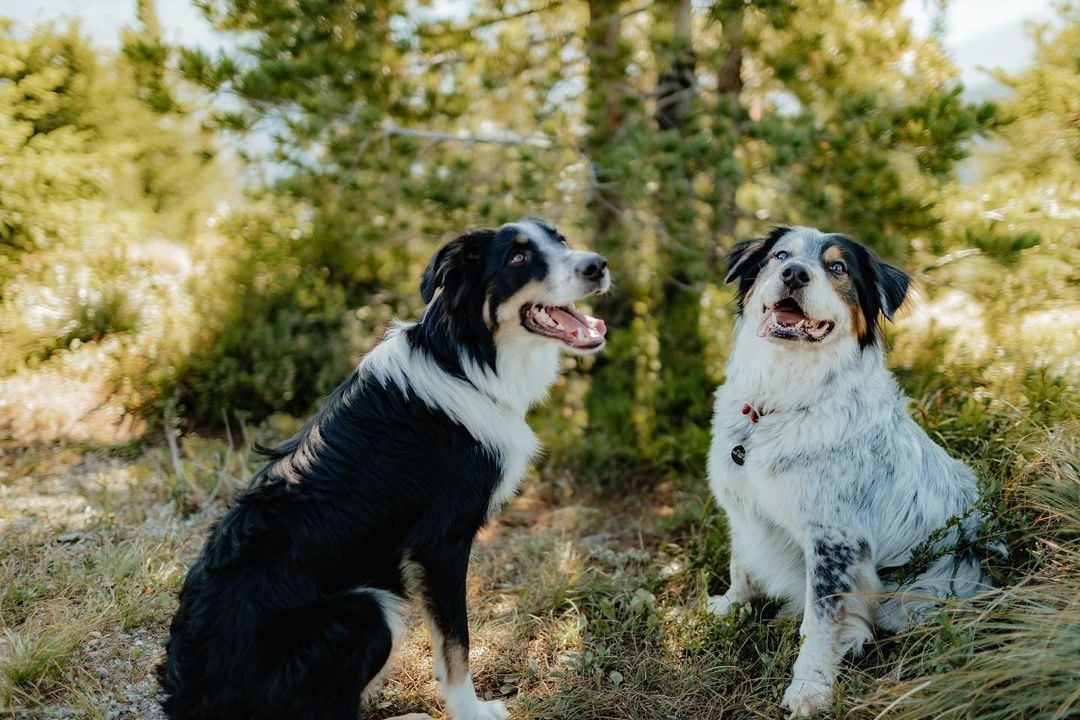
The Border Aussie’s weather-resistant double coat requires little effort to keep clean, but you may need to keep your lint roller at the ready. They are seasonal shedders, so prepare to deal with extra fur during spring and fall.
Skin Care
Good coat care is the key to good skin care. Regular grooming can help remove sticks, burrs, and other debris that can get caught in the Border Aussie’s coat and irritate their skin. Ask your vet how often you should bathe your Border Aussie, and keep in mind that too many baths can strip the skin of healthy oils.
Because Border Aussies need lots of exercise and outdoor time, check their skin for ticks and keep them up to date on flea and tick preventatives year-round.
Coat Care
Border Aussies typically need to be brushed once or twice a week to maintain a healthy coat and keep their moderate shedding in check. You’ll likely need to increase your brushing frequency during the spring and fall.
Recommended Products
Eye Care
Both of the Border Aussie’s parents are prone to eye issues. Notify your vet if you notice discharge, irritation, or cloudiness.
Ear Care
Talk to your veterinary team about how you should clean your dog’s ears, and how often. Call your vet if you notice signs of an ear infection, such as redness, odor, pain, itchiness, or head shaking. Always clean your dog’s ears with a veterinary-approved cleaner.
Considerations for Pet Parents

Here are some questions to consider before adding a Border Aussie to your family:
-
Do I have the time and energy to exercise a highly energetic dog for at least one hour every day?
-
Do I have the time to properly socialize a dog so they can thrive as a family pet?
-
Do I have the skills, patience, and dedication to consistently train a dog using positive reinforcement?
-
Am I home enough to give a dog companionship?
-
Am I financially prepared to provide veterinary care?
-
Can I provide a dog with a loving home for their lifetime, which could be 15 years or more?
If you can answer these questions with an enthusiastic “Yes!” you may be ready to parent a Border Aussie.
Border Aussie FAQs
Are Border Aussies good dogs?
Border Aussies can be great for families who have the time and energy to provide them with one to two hours of exercise every day, and who spend most of the day at home.
How big does a Border Aussie get?
Border Aussies are the offspring of Border Collies, which weigh 30–55 pounds, and Australian Shepherds, which can weigh 40–65 pounds. You can reasonably expect your Border Aussie to be a medium-sized dog that will max out at around 65 pounds.
Are Border Aussies smart?
Yes, Border Aussies are incredibly smart dogs. Their parent breed, the Border Collie, is often cited as the most intelligent dog breed.
Featured Image: Instagram/@border.aussie.poppy
